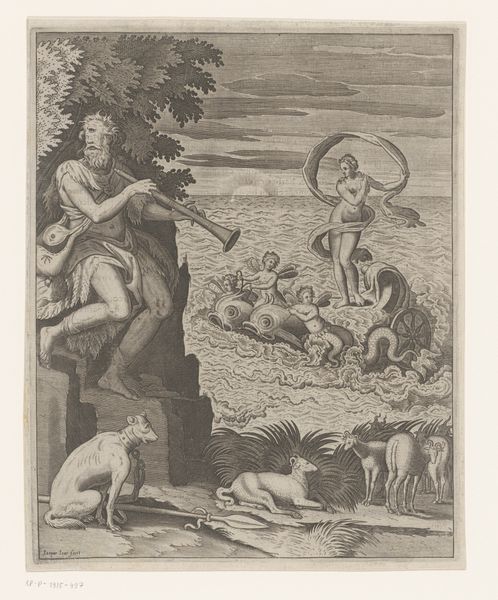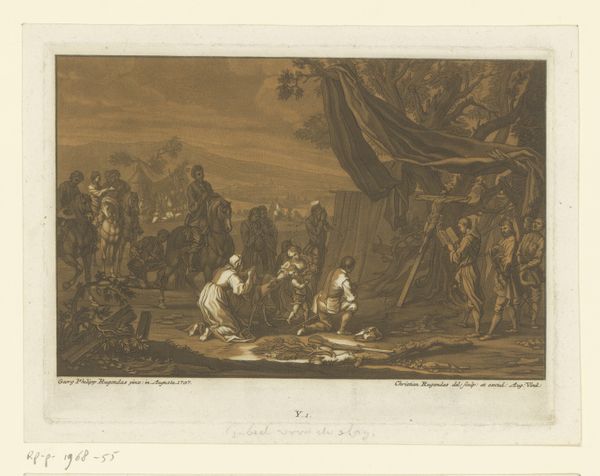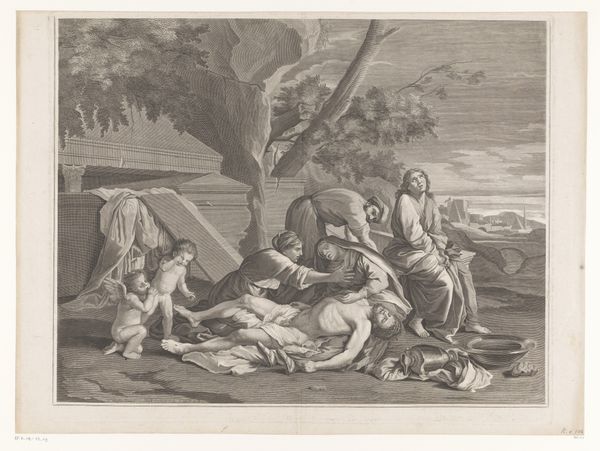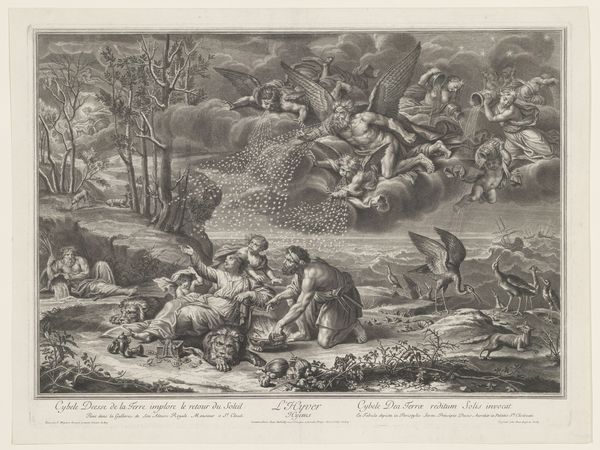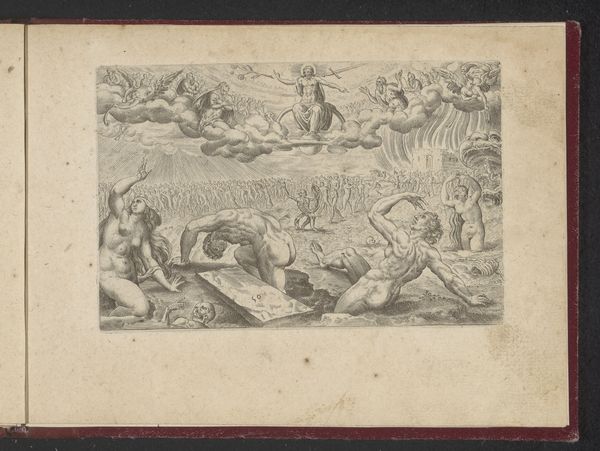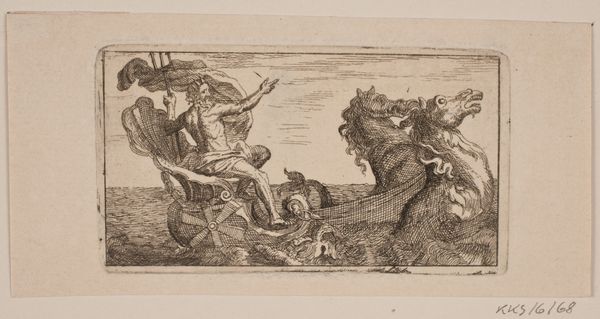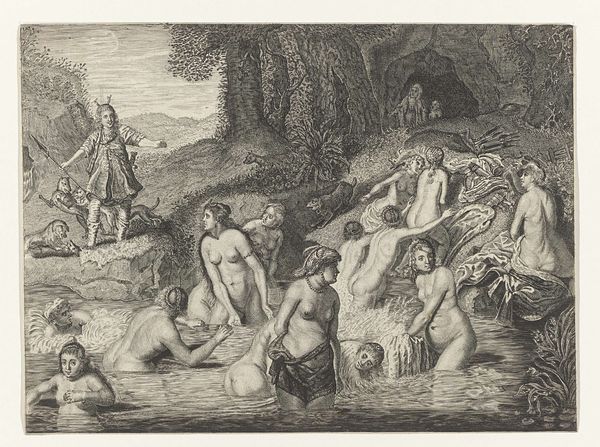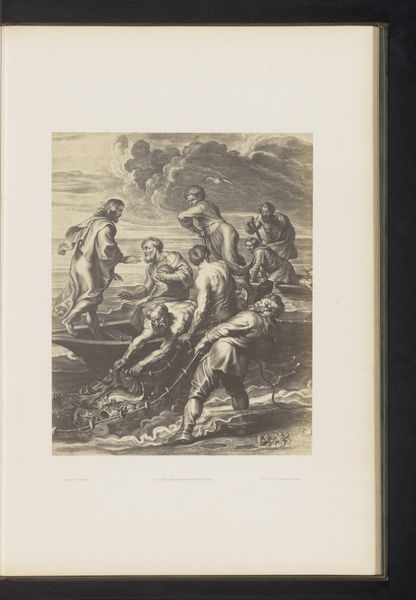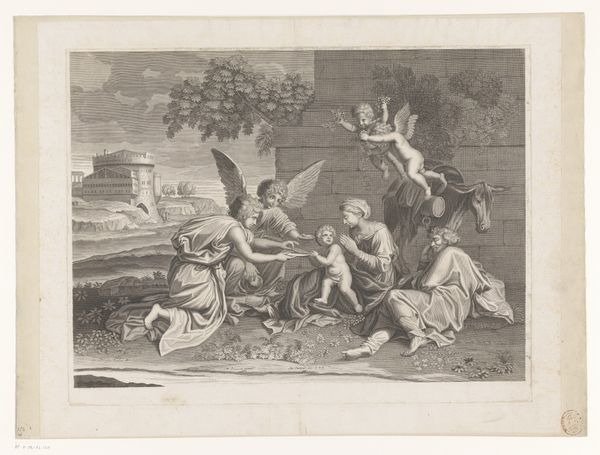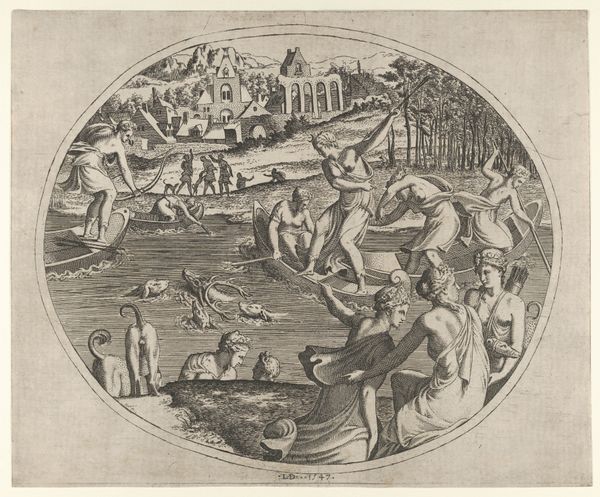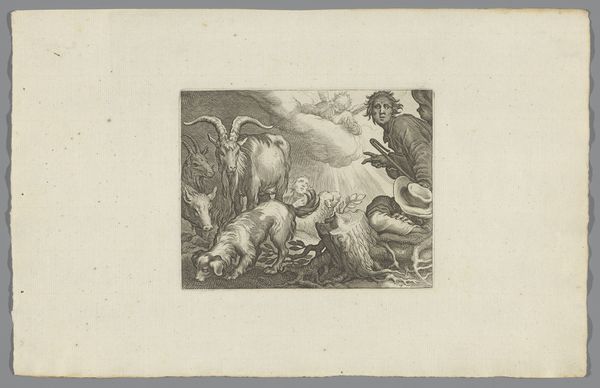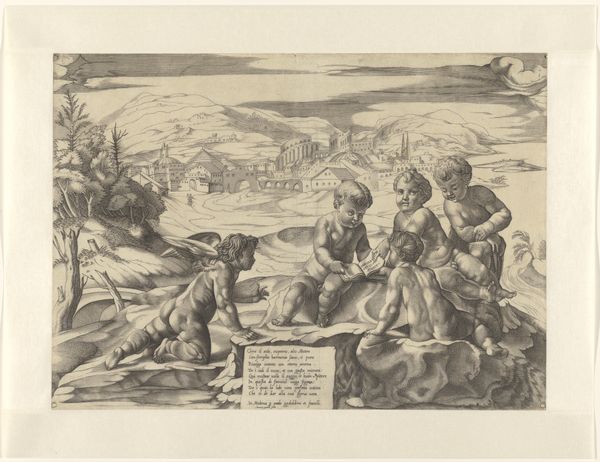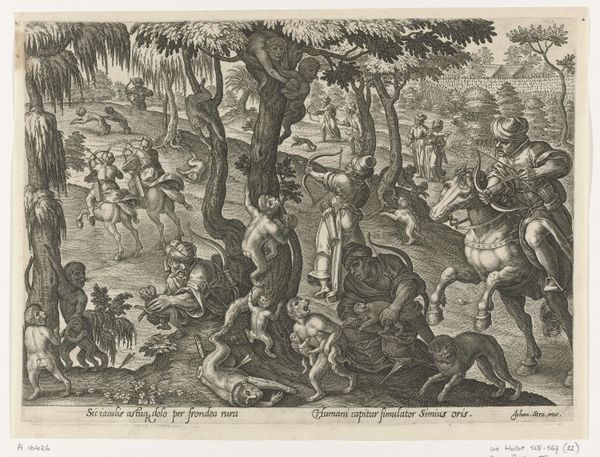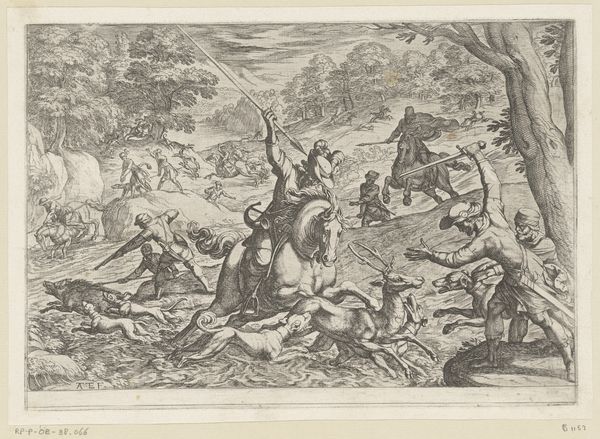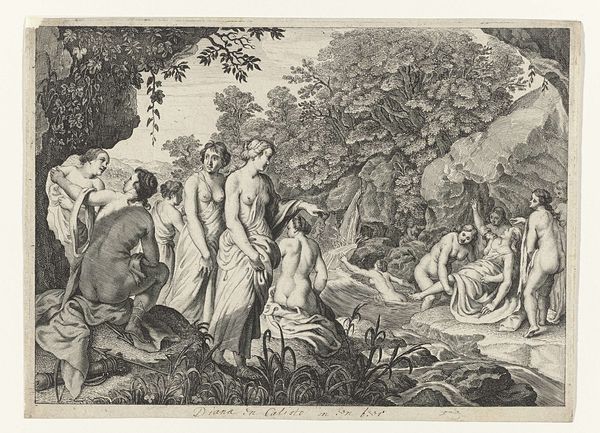
print, graphite, engraving
#
narrative-art
# print
#
figuration
#
romanticism
#
graphite
#
history-painting
#
academic-art
#
graphite
#
engraving
Dimensions: height 541 mm, width 642 mm
Copyright: Rijks Museum: Open Domain
Thomas Holloway created this engraving, Wonderbare visvangst, around the turn of the 19th century. It is made using the intaglio printmaking technique, where an image is incised into a metal plate, and then inked and pressed onto paper. Holloway was a skilled engraver, but one working in a very specific historical context: the rise of mass media. Engravings like this were not so much original artworks as a means of reproducing images, making them widely accessible. It is important to remember that this print depicts a biblical scene of miraculous fishing, which requires labor and resources that are not always equally distributed. Look closely and you can see the density of labor it embodies, not only the artist's, but also that of the fishermen whose livelihoods depend on their catch. Consider how this image, made through a process of reproduction, brings into focus the intersection of art, labor, and consumption. Understanding the material and social context helps us appreciate the full meaning of this artwork, challenging conventional distinctions between high art and craft.
Comments
No comments
Be the first to comment and join the conversation on the ultimate creative platform.
